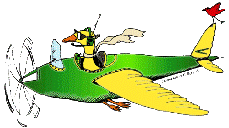Bird Strike Committee Proceedings
Date of this Version
October 2002
Document Type
Article
Abstract
Small and moderate-sized airports face increasing financial constraints. A need for a wildlife hazard assessment can represent a real financial hardship. We describe how a wildlife incursion log maintained by airport personnel can provide an economical means of assessing wildlife hazards in a rural landscape. Using such a log with records for 208 days, we created a relational database that could be analyzed with simple summary statistics. Using the incursion log, we examined seasonal shifts in average daily incursions (such as increased sandhill cranes in the spring), persistent year- round presence of some species (such as American crow), and the influence of time of day on the percentage of incursions by species (most incursions occurred in the morning hours). Flock size was also frequently recorded, allowing us to assess average flock size by month and frequency of flock sizes for various species. Some modest improvements and training of personnel in identification and record keeping would further enhance the usefulness of this type of data collection. We conclude that assisting small airports with the set up of a wildlife incursion log can be useful for both hazard assessments as well as ongoing monitoring needed in an adaptive management protocol.


